The rising cost of food makes eating healthy whole foods more and more difficult. One of the benefits of a freeze dryer is being able to preserve food at the peak of harvest, when foods are most affordable, to enjoy throughout the year ahead. It’s important to know what foods cannot be freeze dried to avoid wasting your time and your grocery budget.

Freeze Drying for Food Preservation
One of the cornerstones of homesteading is food preservation and the ability to build up a well-stocked pantry. Eating well on a budget makes knowing how to cook from home when times get hard and spending our time wisely preserving food for our family very important.
My food preservation techniques for canning, dehydrating, and fermenting have really helped us to put up the food we grow on a yearly basis. Canned cherries, fermented lemons, and dehydrated herbs all have their place in my pantry.
Layering in a new food preservation method year by year has allowed us to diversify our long-term food storage to be ready for emergencies, like short-term power outages or supply chain shortages (like when you couldn’t find canning supplies in 2020).
When I added freeze drying as my latest method of food preservation, I was pleasantly surprised by the results. You can find my full story here in my honest review of the Harvest Right Freeze Dryer.
We have had great success when we freeze dry vegetables like corn and freeze dried potatoes, or make freeze dried berries, freeze dried herbs, freeze dried eggs, freeze dried milk and other dairy products. We have even made other fun foods like freeze dried baby food, chicken pot pie and freeze dried guacamole.
With all our freeze drying successes, I’ve written a freeze drying book, Freeze Drying the Harvest. But knowing what foods cannot be freeze dried is equally important.
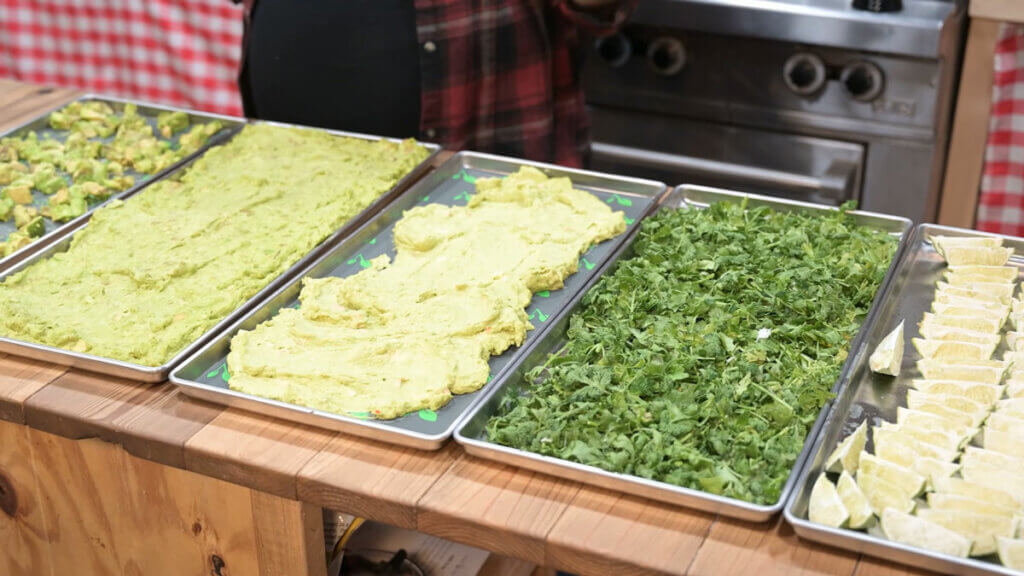
Freezing vs. Freeze Drying
Freezing
When freezing food, the temperature of the food is brought below the freezing point of water (32°F or 0°C). The water in the food crystalizes as it freezes, helping slow down the growth of microorganisms and harmful foodborne bacteria.
Freezing foods in a standard home deep freezer (especially meats) is an excellent way to preserve a large amount of food. But you should know, there are a few foods that should not be frozen.
Raw steak, pork, roasts, chicken, turkey, and fish all store well when frozen safely at the right temperature. Other than pressure canning meat (beef, venison, elk, etc.) and pressure canning chicken, the rest of our meat gets frozen.
If packaged well, you can freeze foods for up to twelve months. When raising a year’s worth of meat, this is a perfect form of preservation. Homesteading Hack: Make sure you have a backup power source, such as a generator, to prevent your food from spoiling during a power outage.

Freeze Drying
Freeze dried foods are shelf stable because of the sublimation process, which removes 99% of the water content from the food. It causes the liquid to turn into a gas without going through the liquid stage. It doesn’t kill the bacteria or microorganisms in the food.
You can pre-freeze many foods to shorten the freeze drying time, but the freeze drying process takes much longer than traditional freezing.
Freeze dried foods retain more nutrients and last much longer on the pantry shelf than other forms of food preservation (like dehydrating or canning). In fact, most freeze dried food is shelf-stable and stays very nutrient dense for up to 25 years, though we lean toward using the freeze dryer for preserving food from year to year.
Why Are Some Foods Not Suitable for Freeze Drying
Because of the freeze drying process, certain foods aren’t suitable for freeze drying (just like some foods should not be dehydrated). Foods need the appropriate amounts of moisture, fats, and sugars to be suitable for this preservation method.
Freeze drying unsuitable foods will result in poor flavor, consistency and texture, and perhaps result in safety issues. It’s also possible for the food not to freeze dry fully (without you knowing), leading to spoilage at room temperature.

Foods You Should Not Freeze Dry
Only a few foods lack the proper moisture, fat, or sugar balance. Knowing what they are prior to embarking on this food preservation method is important.
Fatty Meats
When freeze drying fatty raw meats, it’s important to understand that the freeze drying process does not kill off bacteria or cook the meat. If you freeze dry raw meats, they will still be raw when you reconstitute them. If the cut is too thick, it will not freeze dry well and could be unsafe to eat.
Fatty meats, like bacon, can technically be freeze dried, but it won’t be shelf stable. If you want to freeze dry bacon, I would recommend storing it in the refrigerator or freezer and consuming it quickly. I would suggest the same for fatty cuts of chicken, pork, beef and wild game.
Bones
Don’t freeze dry bones. The thick calcium part of the bone protected by the marrow makes freeze drying very difficult. This easy recipe for Instant Pot bone broth can be freeze dried and used when reconstituted.
We store our bones in the freezer until we’re ready to make broth.
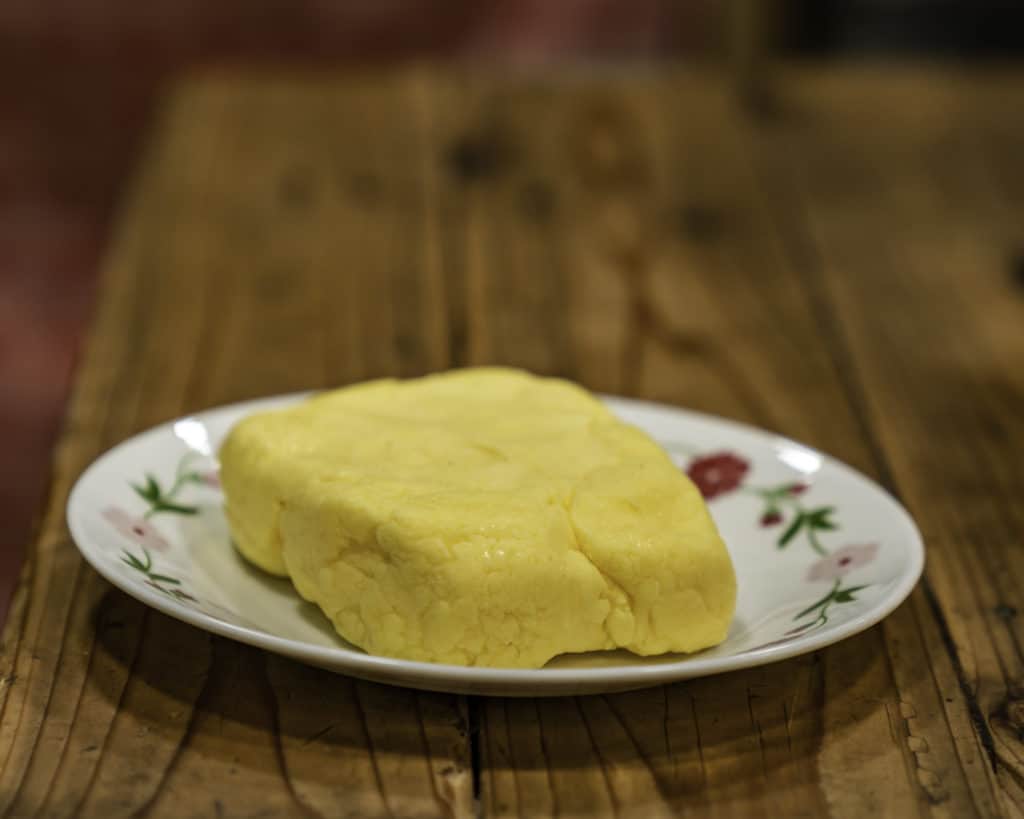
Butter
The high fat content of butter prevents it from freeze drying well. Instead, try making homemade butter and then freezing it instead.
Some Candy & Cookies
Freeze dried Skittles and Jolly Ranchers have become a popular novelty. You’ll now see these being sold at many Farmer’s Markets and Street Fairs. Freeze drying candy and selling it could be a great way to help offset the cost of the freeze dryer.
However, candies with high sugar content and low water content may not freeze dry well (nor will chocolate-based candies – see below). This is one of those categories where I say have fun and experiment with freeze drying different candies, then decide what you like best.
Chocolate
Pure chocolate has a high fat content in the cocoa butter. It will leave an oily residue behind, and the texture will change. Instead of freeze drying, chocolate can be frozen, refrigerated or vacuum sealed to extend its shelf life.
Foods containing a small amount of chocolate as an ingredient can be freeze dried. However, the shelf life won’t be 25 years, and you will want to consume it within a few months.

Coffee Beans
Whole coffee beans should not be freeze dried due to the impenetrable and oily nature of the bean; they won’t be the same and will lose much of the coffee flavor and yet pick up the flavor of whatever food was in the freeze dryer before them.
Homesteading Hack: You can freeze dry brewed coffee! Pour it into the freeze dryer tray and turn on the freeze dryer. Use the resulting powder to make a cup of instant freeze dried coffee; just fill your cup with the powder and add hot water to taste.

Honey
The high sugar content and thickness of honey will not freeze dry; it will be a sticky, gooey mess. But don’t worry, as long as honey is stored properly in a clean container free of contaminants, the natural anti-microbial properties should give honey an indefinite shelf-life without any other preservation method.
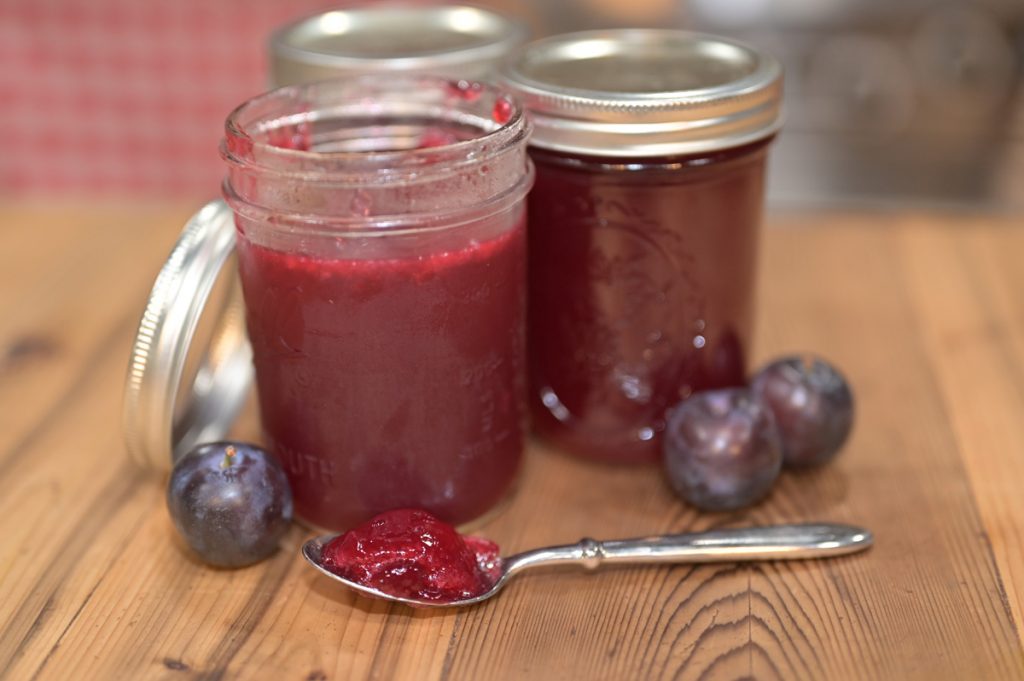
Jams and Jellies
While plain fruits freeze dry well, jams and jellies tend to have a very high sugar content that keeps them from freeze drying well. The good news is that binding up the water molecules in jams and jellies is ideal for the canning process because it inhibits mold and bacterial growth. This canned plum jelly recipe is one of our favorites.
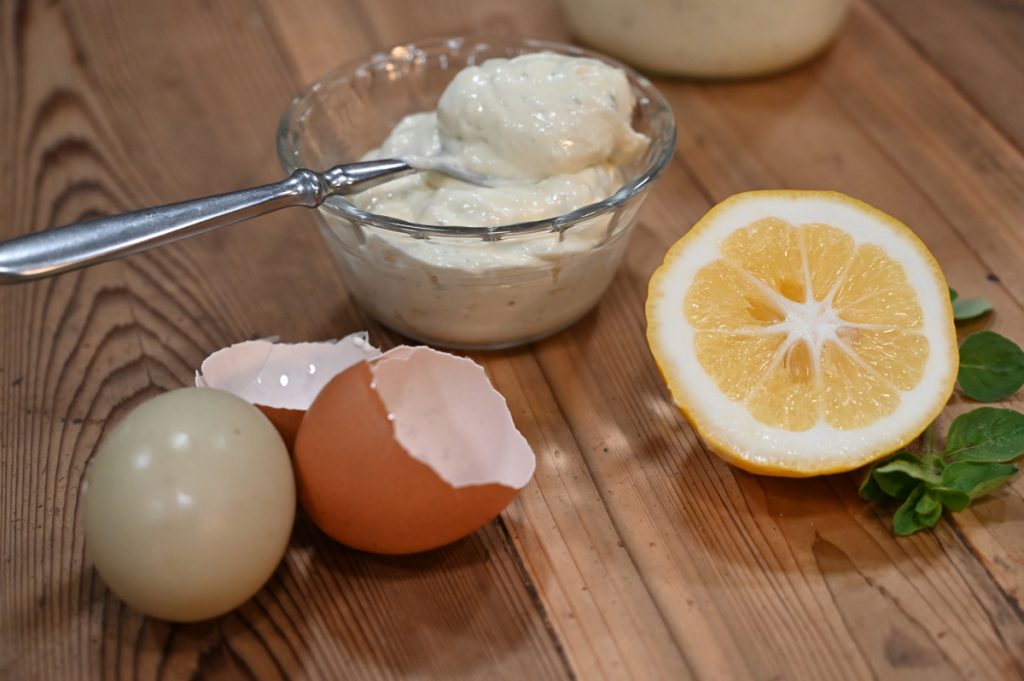
Mayonnaise
The oil content in mayonnaise is so high it will not freeze dry well, and the texture will be extremely oily when reconstituted. This easy lacto-fermented mayonnaise recipe is a much better option and is quick to make while extending the life of homemade mayo.
Nut Butter & Nuts
Whole nuts and peanut butter, nut butters and seed butters have a high fat content and will not freeze dry well.
Once out of their shells, nuts do not have a long shelf life and will preserve best when sealed tightly and stored in the refrigerator or vacuum sealed and consumed quickly. If you want your nuts to last a long time, store them in their shells in a cool, airtight container.
Syrups
Due to the high sugar and low water content, maple syrup, fruit syrups, high fructose corn syrup, and imitation syrups will not freeze dry. You will be scraping it off the tray for days if attempted.

Freeze Drying the Harvest
While I love my freeze dryer for preserving our garden produce and healthy convenience meals, it has also become a workhorse for supporting our natural approach to healthcare.
In my book Freeze Drying the Harvest: Preserving Food the Modern Way, I’ll teach you how to preserve vitamin-packed super-smoothies for a hot summer day, freeze dry powerful medicinal herbs, and immunity-boosting fire cider bites to get you through cold and flu season.
There has been such a high demand for this tested and trusted information that I have also added a Freeze Drying Masterclass to my online video classes in the Abundant Pantry.
These resources can be purchased separately or as companions, so whether you choose the book or the masterclass, you will receive all the information you need to have a pantry packed full of healthy food year-round!
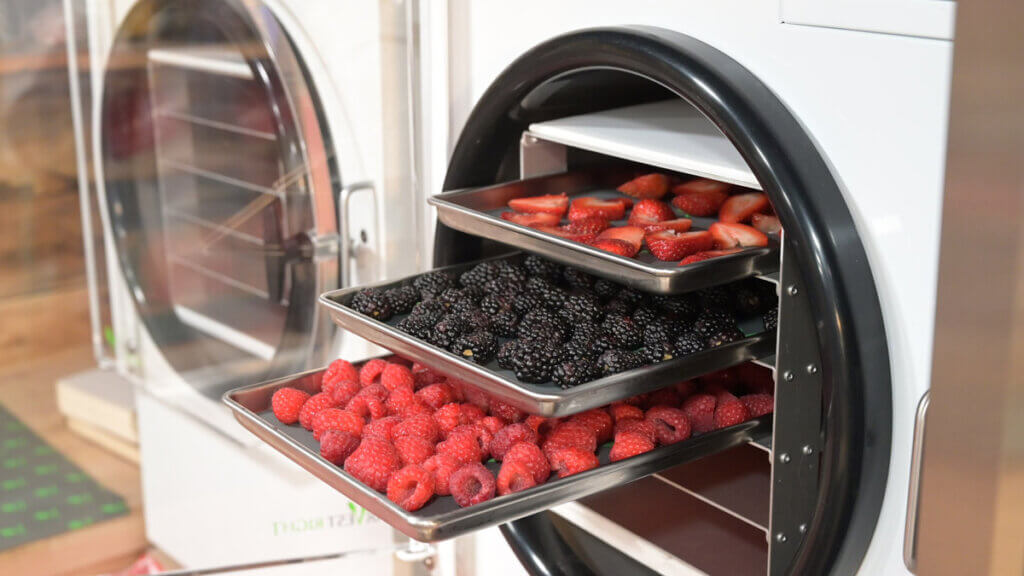
Other Articles You May Enjoy
- Honest Review of the Harvest Right Freeze Dryer
- Which Harvest Right freeze dryer is best for you?
- 7 Steps of Freeze Drying (+Mistakes to Avoid)
- The Difference Between Freeze Dried and Dehydrated Foods
- Freeze Dried Yogurt Recipe
- Freeze Dried Strawberries
- Freeze Dried Water (Can It Be Done?)
- Freeze Dried Dog Food


















